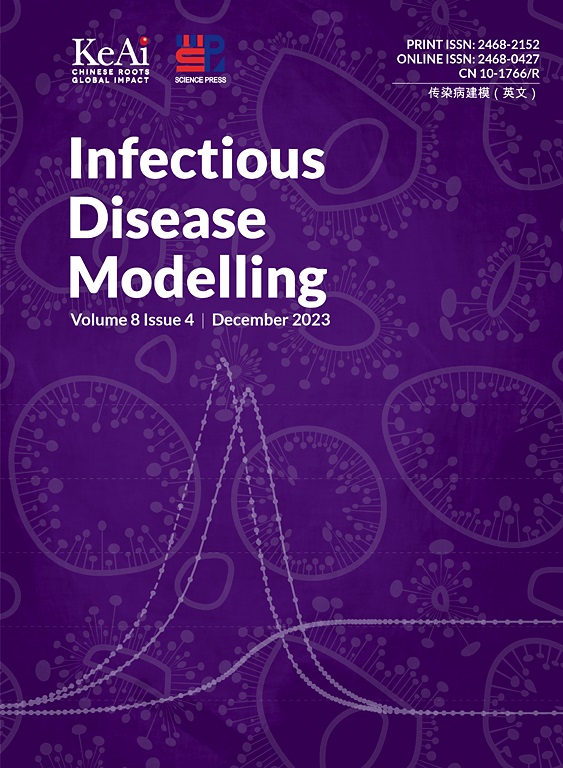State-space modelling for infectious disease surveillance data: Dynamic regression and covariance analysis
IF 2.5
3区 医学
Q1 Medicine
引用次数: 0
Abstract
We analyze COVID-19 surveillance data from Ontario, Canada, using state-space modelling techniques to address key challenges in understanding disease transmission dynamics. The study applies component linear Gaussian state-space models to capture periodicity, trends, and random fluctuations in case counts. We explore the relationships between COVID-19 cases, hospitalizations, workdays, and wastewater viral loads through dynamic regression models, offering insights into how these factors influence public health outcomes. Our analysis extends to multivariate covariance estimation, utilizing a novel methodology to provide time-varying correlation estimates that account for non-stationary data. Results demonstrate the significance of incorporating environmental covariates, such as wastewater data, in improving model robustness and uncovering the complex interplay between epidemiological factors. This work highlights the limitations of simpler models and emphasizes the advantages of state-space approaches for analyzing dynamic infectious disease data. By illustrating the application of advanced modelling techniques, this study contributes to a deeper understanding of disease transmission and informs public health interventions.
传染病监测数据的状态空间建模:动态回归和协方差分析
我们分析了来自加拿大安大略省的COVID-19监测数据,使用状态空间建模技术来解决理解疾病传播动态方面的关键挑战。该研究应用组件线性高斯状态空间模型来捕获周期性,趋势和随机波动的情况下计数。我们通过动态回归模型探讨了COVID-19病例、住院、工作日和废水病毒载量之间的关系,为这些因素如何影响公共卫生结果提供了见解。我们的分析扩展到多变量协方差估计,利用一种新的方法来提供考虑非平稳数据的时变相关估计。结果表明,纳入环境协变量(如废水数据)在提高模型稳健性和揭示流行病学因素之间复杂的相互作用方面具有重要意义。这项工作突出了简单模型的局限性,并强调了分析动态传染病数据的状态空间方法的优势。通过说明先进建模技术的应用,本研究有助于加深对疾病传播的理解,并为公共卫生干预提供信息。
本文章由计算机程序翻译,如有差异,请以英文原文为准。
求助全文
约1分钟内获得全文
求助全文
来源期刊

Infectious Disease Modelling
Mathematics-Applied Mathematics
CiteScore
17.00
自引率
3.40%
发文量
73
审稿时长
17 weeks
期刊介绍:
Infectious Disease Modelling is an open access journal that undergoes peer-review. Its main objective is to facilitate research that combines mathematical modelling, retrieval and analysis of infection disease data, and public health decision support. The journal actively encourages original research that improves this interface, as well as review articles that highlight innovative methodologies relevant to data collection, informatics, and policy making in the field of public health.
 求助内容:
求助内容: 应助结果提醒方式:
应助结果提醒方式:


